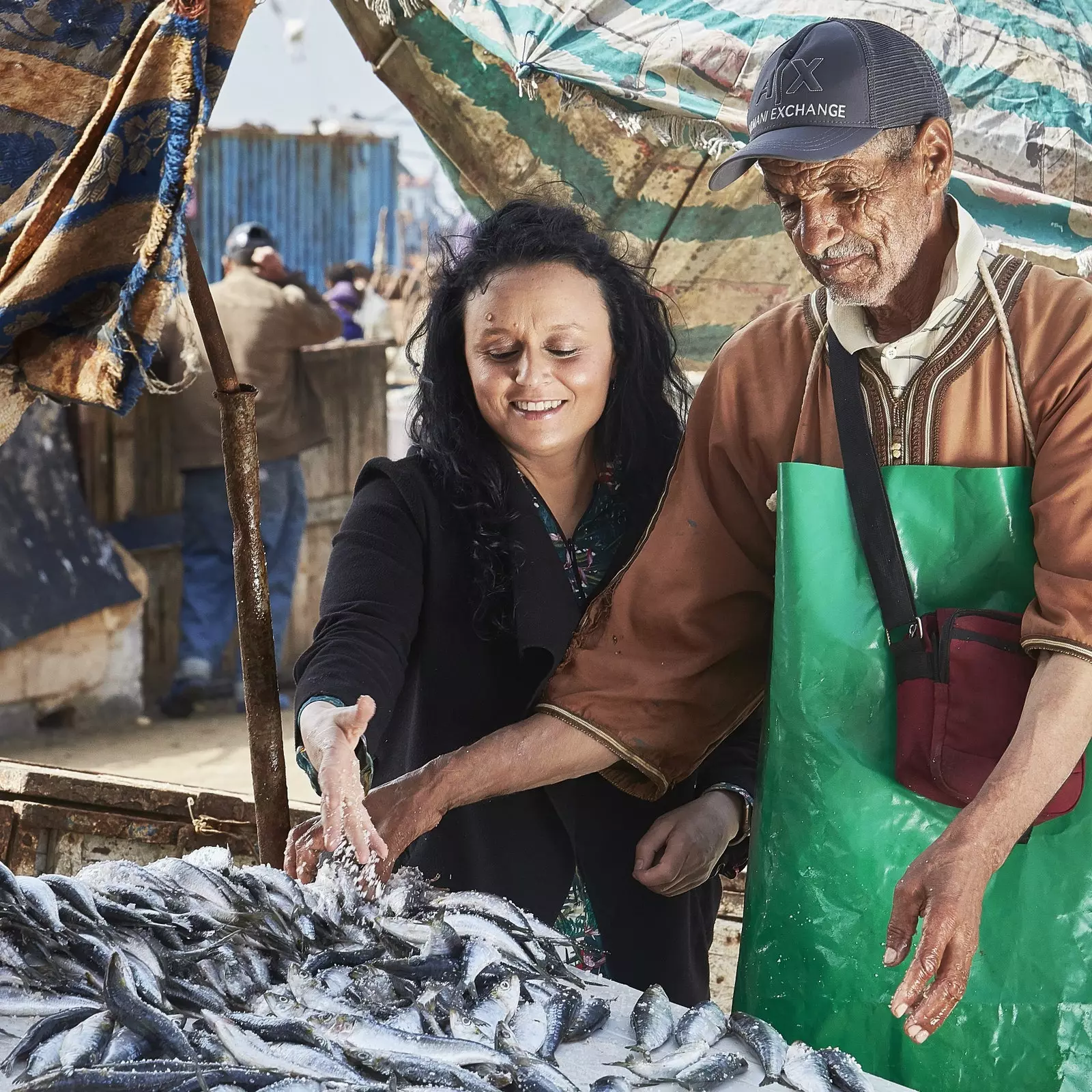
If Najat cuisine stands out for something, it is because of the product.
We will start this article by traveling to the city of Fez and its medina, in the northwest of Morocco, closer to the Atlas Mountains than to the sea of Essaouira. Here the cuisine that is breathed is from the mountains, a kitchen of spices, made in clay pots, with love and by women who also take care of the field with their own hands, who knead bread and who are capable of cooking dishes that would surprise you with their flavor even in the most prestigious restaurant in the world. Up to here the seafood also arrives, sometimes even shark pieces, and it does so fresh from the Atlantic, as fresh as it would arrive in Casablanca or any other city on the coast.
And it is to Fez where you have to travel if you want to try the cuisine of the best moroccan restaurant in the world , Nur, which means “light” in Arabic. This is how it has been cataloged for two consecutive years, 2018 and 2019, by the prestigious awards World Luxury Awards . Yes, it is a fancy restaurant in north africa , quite a challenge but understandable when you meet the soul of the project, a woman who fears nothing, not even opening a haute cuisine restaurant in the middle of nowhere. We talk about Najat , the so-called "pilgrim chef" or a kind of Rocky Balboa of world cuisine.
If you think Moroccan cuisine is couscous and tagine, in Nur you are going to be disappointed . Here the local product is the most important thing, from a tomato to a lamb, they are made under the most avant-garde techniques but with the tradition of always, that of the kitchen of the women of the Atlas.
Nur appeared in Najat's life when she was working in Mexico. . It was Stephen di Renza, the director of the Majorelle Garden in Marrakech who called him one day in 2016 to tell him that she had left an empty place in Fez and that she had to do something with it. After much thought she said yes and embarked on one of her latest adventures. Adventures and recipes after a life behind the stove that she tells in her latest book Najat. Recipes and fascinating stories to discover the magic of Morocco (Gastro Planet).
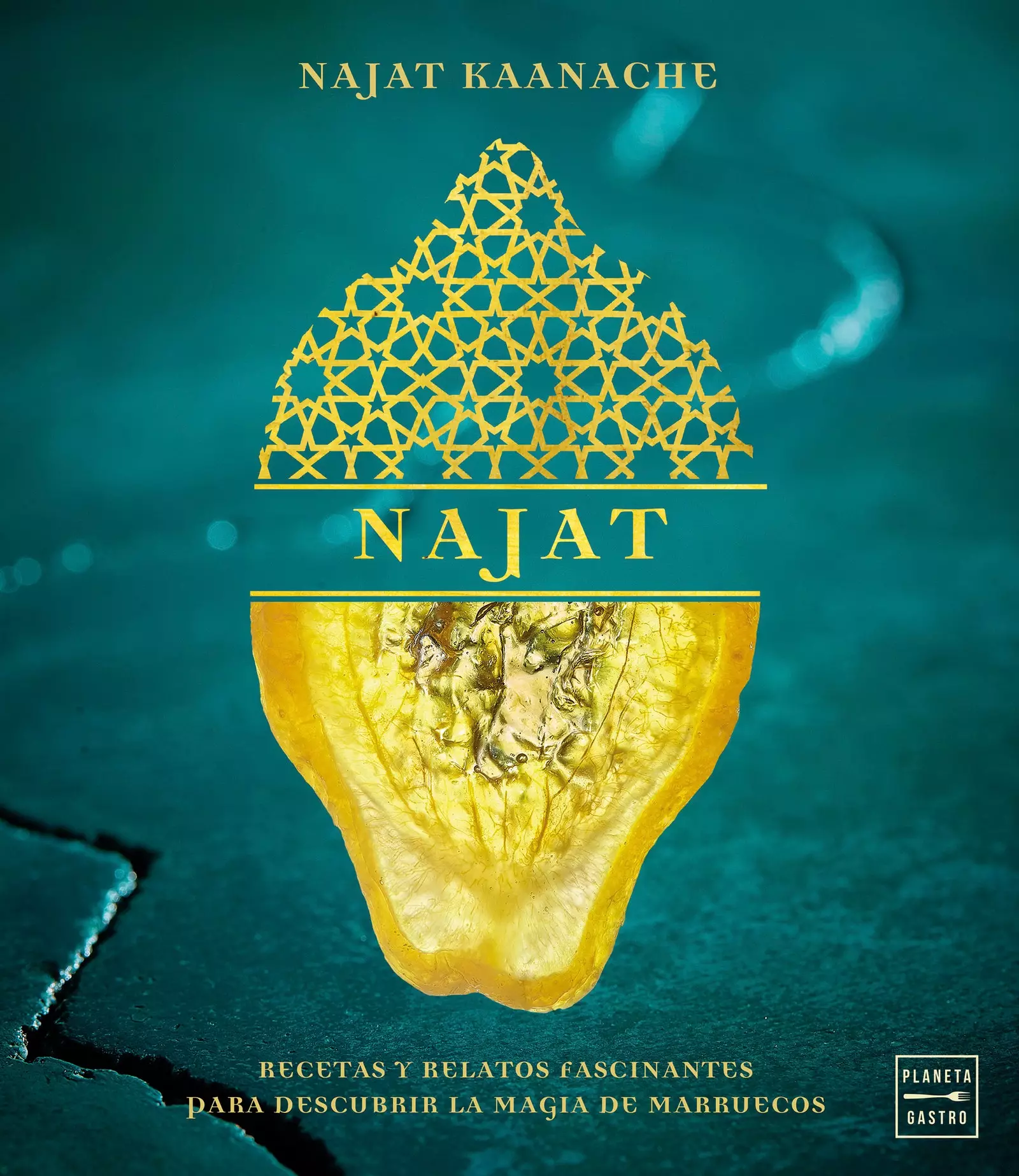
Najat Kaanache's new book.
FROM THE BASQUE COUNTRY TO NUR
We started this journey at the end, at Nur, but if you haven't followed this intrepid cook closely (something you should do right now) it's worth knowing that she is almost as linked to Morocco as to the Basque Country . Her parents, born in the villages of the Atlas Mountains, two hours from Fez, ** emigrated to San Sebastián in 1975 **, you can imagine how many Moroccan families there were in Spain at that time! Very few...
Among the smells of pilpil cod, her mother was possibly the only one who cooked with cumin in the entire neighborhood. It was at that time that a little Najat learned several things : one of them that her mother's Moroccan cuisine was simple, with lots of vegetables, legumes and fish, always made with great care. “Our way of eating was different from that of my Spanish colleagues. At mid-morning they ate a Nocilla sandwich, while I had one of vegetables. Over time, I learned that our sober way of life was actually very natural and healthy,” Najat says in the book.
She also learned that in order to adapt to the Basque way of life "They had to make more of an effort, because they were from outside" That is why her mother shared the couscous that she prepared for hours with her neighbors and those flowers that she cultivated with love as well.
“The aromas that I remember the most are those** lentils with cumin that you could already smell from the door of the house**, the garlic, the harissa... Those aromas that are from home, the bissara, that pea that is cooked for hours with garlic, and that at the end it has a splash of raw oil and that you finish it with a good bread. That which I thought was food for the poor but that became something in my brain, in a rich childhood”, Najat explains to Traveler.es.
Her family did not stop traveling to Fez in the summers, and that was how she integrated Moroccan and Basque cuisine in her heart . When she grew up she decided that she wanted to be a chef, but that she wanted to be the best. She began her career in the Netherlands -curiously, from Holland she has brought part of the team that has worked on the recipes for her new book and Nur de ella-de ella. In The Hague she began to cook her skewers and set up her catering company her, and she climbed from one restaurant to another, each time better, until her Holland was too small for her.
She wrote a letter to 49 chefs from around the world with whom she wanted to work, including Ferrán Adriá , and 27 responded. He traveled the world, working day and night in the most prestigious kitchens in France, the United States and ended up getting his job in the kitchen of El Bulli.
He slept in a town in the mountains of Girona and he walked two hours every day to get to the kitchens of Ferrán Adriá on time . “I took my job very seriously: I didn't drink or smoke. We do not have much time in this life and in those times I decided to dedicate everything to my work. She was ready for anything,” says Najat in the book.
With Najat's undertaking it is logical that after two seasons at El Bulli equally fascinating things would happen. She opened five restaurants around the world, including Nur, and she hasn't stopped for a second since. She confesses in the interview we do with her about the book that her future dream is to work on television and open a cheese factory with women from the north of the Basque Country because “I love the cheeses from the north of Spain”.
She is also passionate about the figure of women in gastronomy, which is why her work, especially in Nur and in Morocco, is that of give value to women who work in all areas, both in agriculture and in the kitchen. “In Nur I teach my people that men are not better than women, nor are women better than men. Together we try to do something nice every night, ”she emphasizes in her book.
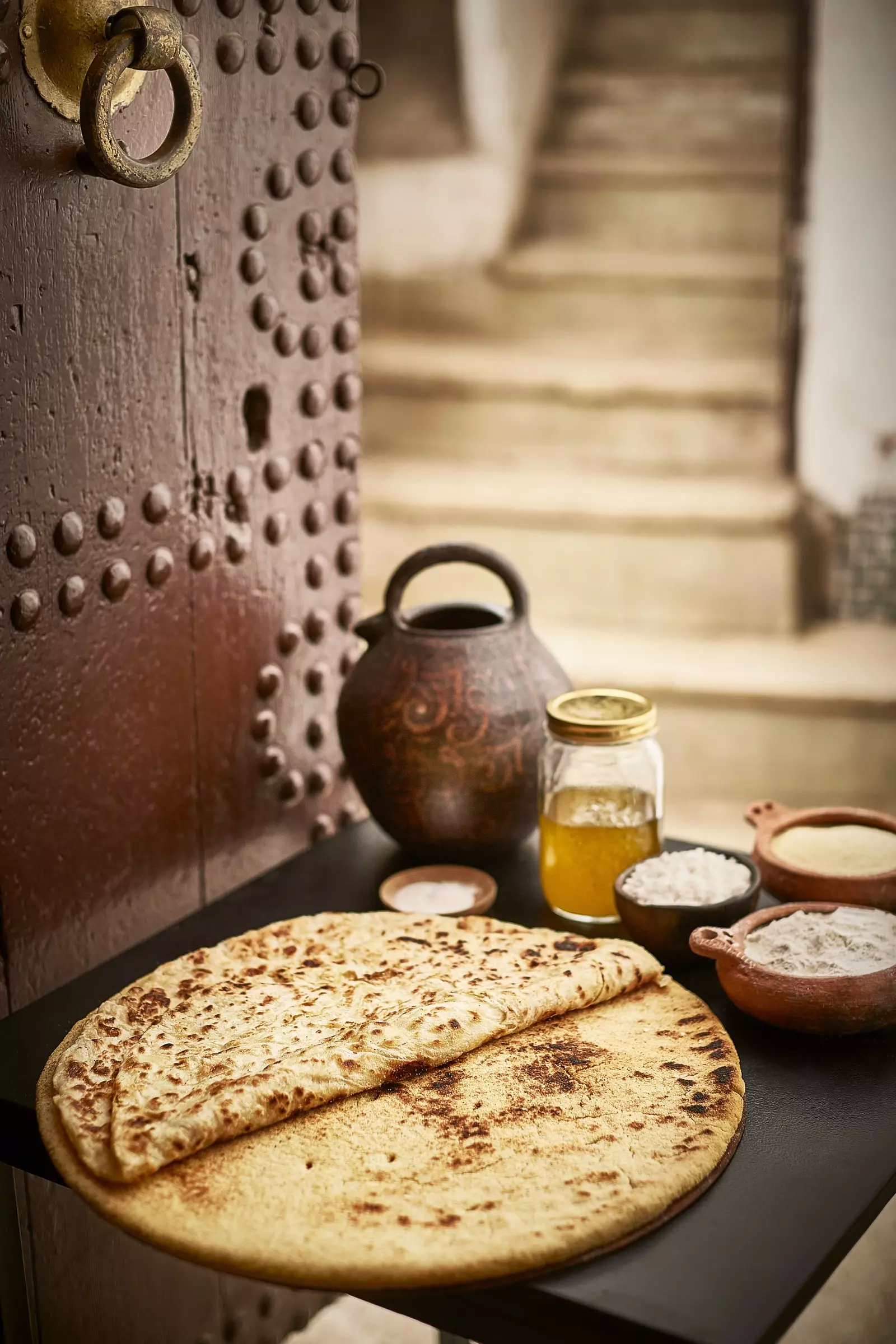
Harcha, semolina bread typical of Morocco.
AN AMAZING RECIPE BOOK
Najat is a great book, and not only because of its content, but because of its dimensions. You could say it's a collector's item. In it, in addition to the vital journey of Najat Kaanache, you will find 150 recipes full of color and flavor . It is not a book for beginners in the kitchen, or yes, but it is not for super professionals either.
“It is a book with stories that are a small introduction to my world, where I come from, what cooking makes me feel. Nobody is perfect, and nobody has the best dish, what we want is to share a little bit of our experience, of what we do . As each family has its bacalo or its stew ”, she emphasizes to Traveler.es.
The book is structured in** recipes for herbs and spices**, such as harissa, one of the most praised Moroccan sauces in the world, preserves and fermentations , because pickles have been part of Arab cuisine since time immemorial, breads (those delicious breads with which most dishes are accompanied), dairy products like fresh cheese or jben; also salads, soups, fish, meat, vegetables and side dishes, sweets or teas.
It is curious because Najat venerates the product above all else, from a tomato to an artichoke; by the way, two of the most important in Moroccan gastronomy. “ My kitchen is a colorful kitchen, full of soul, respect and always giving space to the sea, the land and the mountains because inside me I am a homemaker . I like a good olive oil, a piece of bread, a fried egg and a good tomato salad, or a simple grilled sea bream. That is to say, my kitchen is a kitchen that respects tradition but wants more, it is rebellious but from the heart, ”she says.
Thus, the recipes range from the most daring to the easiest to recognize if you have traveled to Morocco. What many will not know is that lemon is the star ingredient in most of them.
But not just any one, but the etrog , a variety for which he had to travel for nine hours from Fez to find it. This type of lemon, also used by the Jews in their dishes, is used for both sweet and savory preparations, and is, as she says, "the diamond of the kitchen." “The lemon has a brutal strength from the peel to the inside. It has the color of the sun, brightens and cleanses the palate ”. For this reason, she is the protagonist in many of the dishes that appear in the book and on the cover.
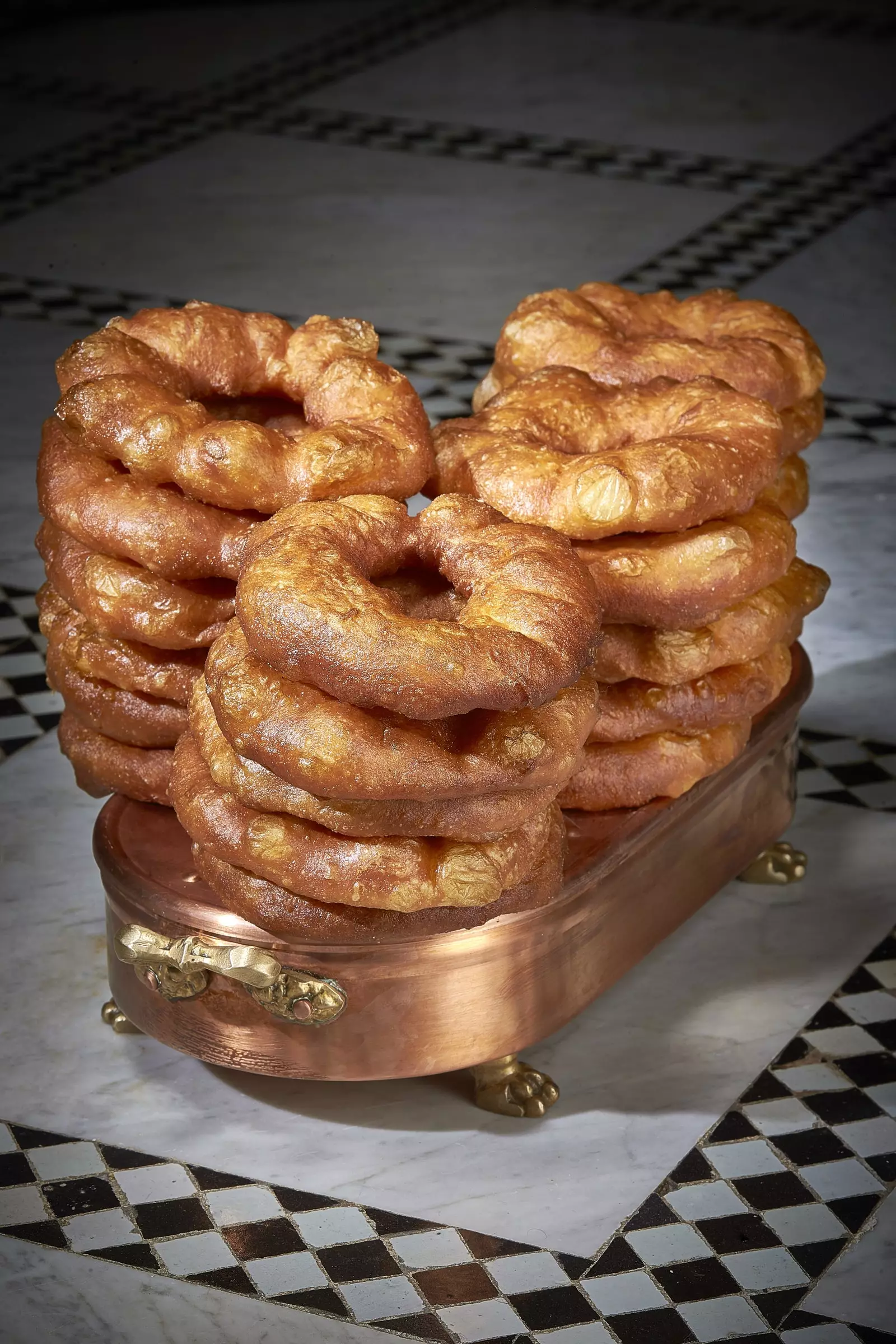
Sfenj, the Moroccan donut recipe that you will only find in Najat Kaanache's book.
They leave us with our mouths open Harcha or semolina bread recipes , the Baghrir or Arab pancakes, the Zaalouk or aubergine salad, also the Harira, the legume and vegetable soup that Najat's grandmother prepared by breaking an egg before bringing it to the table.
You can learn how to prepare marinated mackerel or grilled sardines, and take advantage of all, or almost all, of the fish because, as the chef says, “you don't have to fish too much. What we eat has consequences for the future of the planet.” Of course, the recipe is not missing fish tagine or the beef shank . delicious pickled lemon cheesecakes either Sfenj , the Moroccan donuts for which we would travel again and again to the other side of the sea.
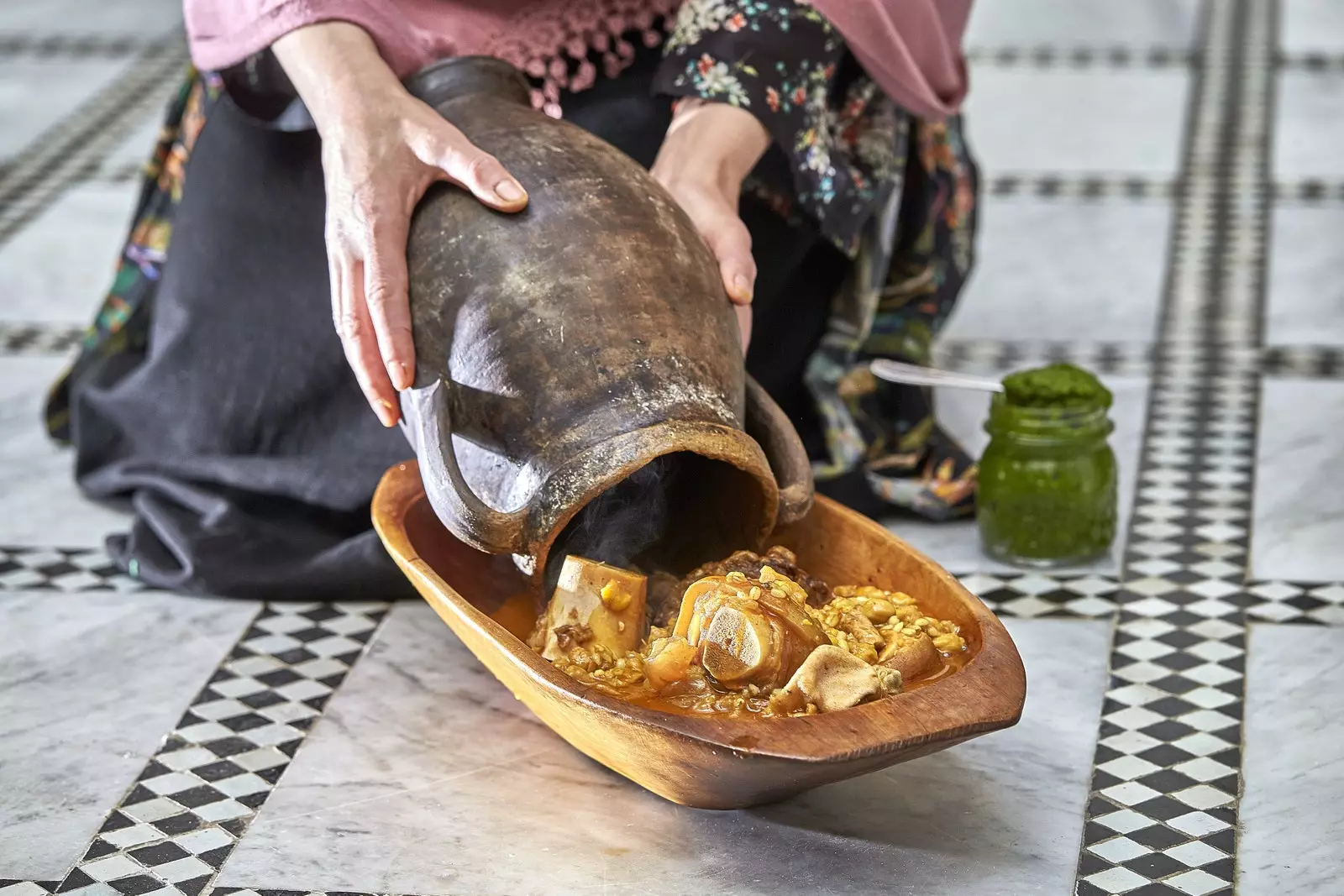
Najat beef shank.
